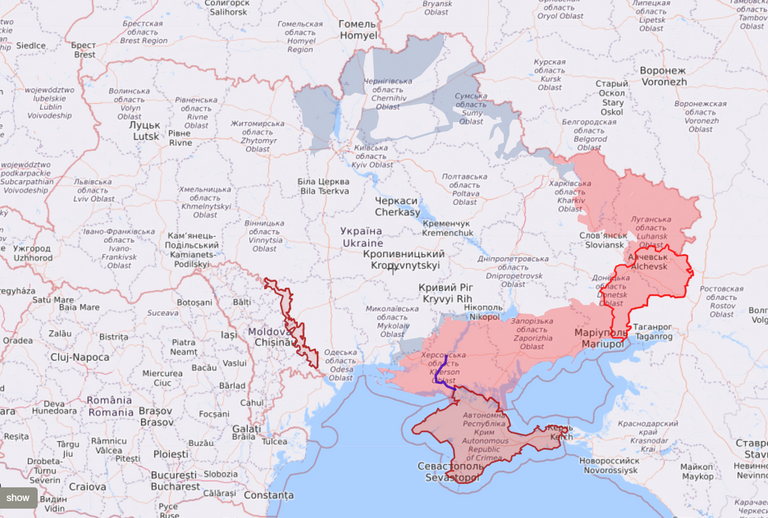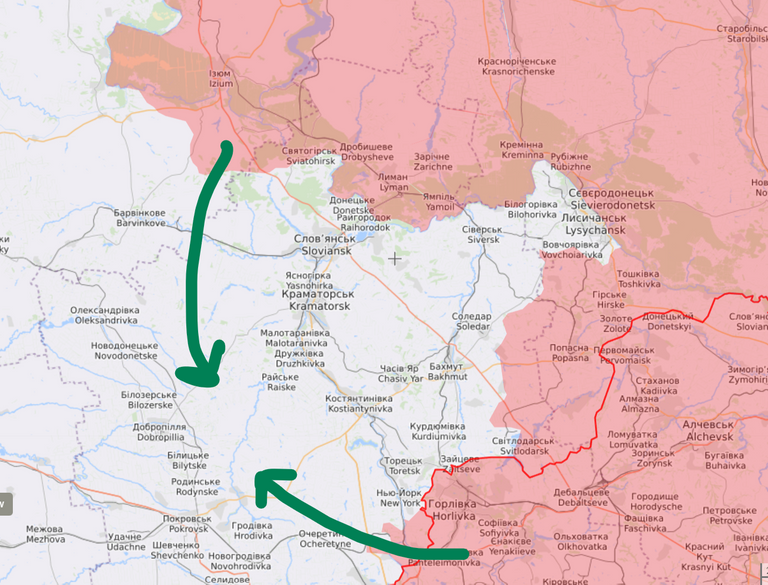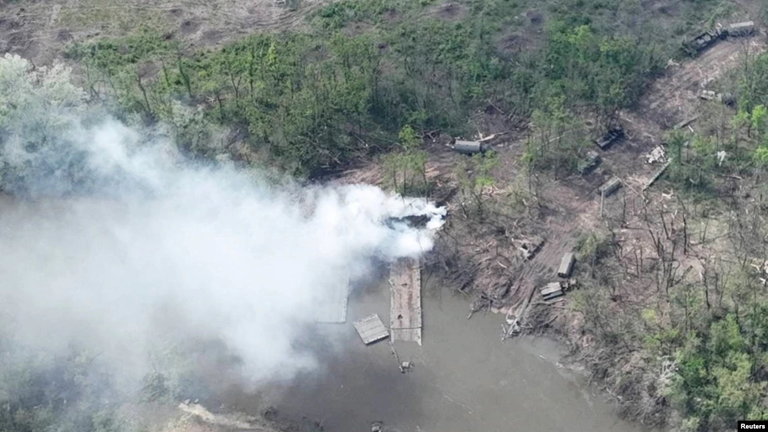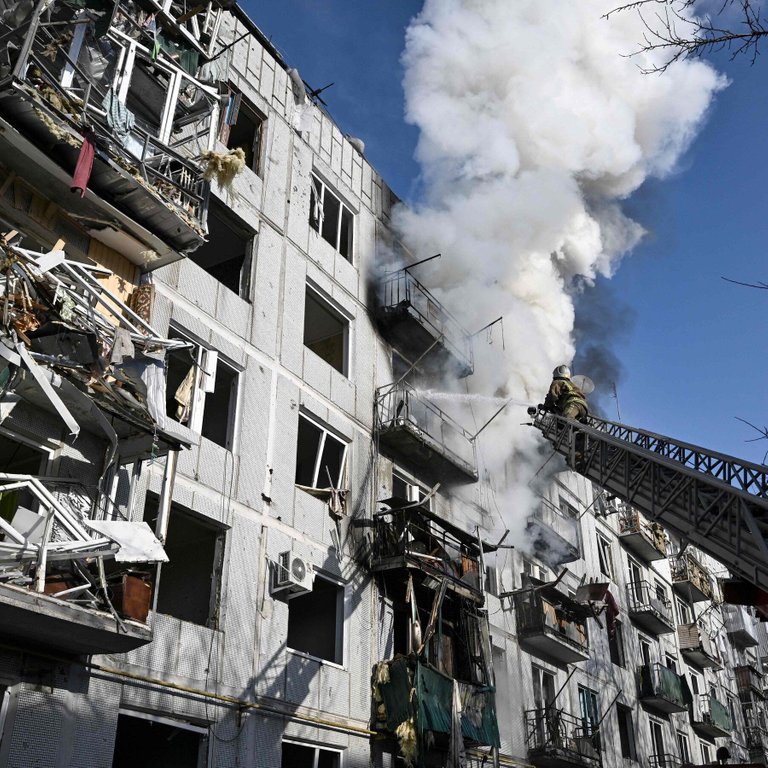
Late last week, the Russian army finally captured the town of Severodonetsk , one of the last remaining Ukrainian holdouts in the Luhansk oblast. Over the last few days, they've redirected their attention to the neighboring town of Lysychansk, with Russian forces closing in from the north, south, and east. So in this article we're going to be taking a look at the most recent developments, what might happen next, and why this war doesn't look like it'll end anytime soon.
So let's start with the recent developments. For the last few weeks, the Russian army has been focusing its efforts on Severodonetsk, a town with a pre-war population of about one hundred thousand in the west of the Luhansk oblast. The Russians reached the outskirts of the town in early March but struggled to make significant inroads for the first month or so. At first, it looked like they were going to go for a pincer movement with forces moving north from Popanza to cut off Ukrainian supply lines into Severodonetsk, but this plan was scuppered after the advance from Popanza stalled with Russian forces unable to overwhelm Ukrainians at the nearby town of Zolotoye. Instead, the Russians decided to go for a frontal assault, coming from the town of Rubizhne, which sits a few kilometers north of Severodonetsk.

When they first entered the town in early June, Ukrainian forces staged a successful counter-attack, pushing them back to the outskirts, but unfortunately for the Ukrainians, the sheer size of Russia's manpower and artillery eventually overwhelmed them, and on Saturday, the governor of the Luhansk oblast admitted that the Russians had captured all of Severo-Donetsk. What remained of the Ukrainian army in Severo-Donetsk retreated to the neighboring town of Lyschansk, a town of similar size that sits just to the east. The two towns are separated by a river, and the four bridges connecting the two have all been destroyed. But this won't have provided too much defense for the Ukrainians because Russian forces are now advancing on Lyschansk from not just Severo-Donetsk but also the south and the north. Having successfully captured Zolotoye on Thursday, Russian forces advanced into southern Lyschansk, reaching the Lyschansk gelatin factory on Saturday.
In the north, Russian forces can advance from Kremina, which they captured in April and which sits on the west bank of the Severo-Donetsk river. Russian forces might also decide to move north from Popanza to cut off supply lines into Lyciansk, possibly presaging a siege. Ukraine only controls a few remaining major roads running into Lviv. As a result, if Russian forces move north from Popanza, they could cut off Ukrainian forces in the town. The governor of Luhansk actually warned that Ukrainian forces might have to retreat prematurely to avoid getting cut off by the Russians. You get the idea. Lyschansk is essentially surrounded, and we can expect Russia to take the town sometime soon. Now, it's worth stressing that while this has symbolic value insofar as it means that Russia will have captured the last Ukrainian holdout in Luhansk, this isn't a particularly impressive military victory. It's taken them more than a month to capture a few kilometers of territory and a couple of small towns, and it's been reported that Russian commander Alexander Devornikov has been sacked for failing to meet Moscow's June 10th deadline for capturing Severno-Donetsk.

So what happens next? If Russia takes Lysiansk, the largest remaining Ukrainian-occupied urban areas in Donbass will be Kramatorsk and Slovansk. Both towns are located in the north of the Donbass oblast and had pre-war populations of 160,000 and 100.000, respectively. Advance here will probably take some time, given they're both heavily fortified about 70 kilometers away from Luciansk and Severo-Donetsk. If the Russians do try and take the towns, however, they'll probably go for another pincer movement akin to the one they're currently trying in Lyschansk, which will take significantly longer than a full-frontal assault. Russian forces will probably try to move south from Izium, where an estimated 20,000 or so troops have been stationed for months, and north from Bachmurt, a town with a pre-war population of about 70,000 that sits 35 kilometers southeast of Kramertorsk.
Bakmut is currently under Ukrainian control and Russia has apparently suffered heavy losses trying to make inroads into the town, but it's being slowly surrounded and has suffered heavy artillery barrages over the last few days, which suggests it's the Russians' next target. Taking Kramatorsk and Slovansk will be no easy task. The two towns are better fortified than Severo-Donetsk and Lyschansk and the Ukrainians will have received more western aid by the time the Russians get there. If the Russians do succeed here, however, they'll have established occupational control over basically all of Donetsk and Luhansk oblasts, the two territories claimed by the Donetsk People's Republic and the Luhansk People's Republic and recognized by Russia back in February. Unfortunately, even if this happens, a quick end to the war still looks unlikely. Even if Kiev agreed to hand over Donbass, which won't happen anyway, Russian forces still occupy large swathes of territory in southern Ukraine and there's little appetite in the west for a compromise any time soon.
All three, who previously represented the continent's more dovish contingent, visited Kiev a few weeks ago to express their support for Ukraine and its EU candidacy status. Who had only a few days earlier warned Nato about "humiliating Putin," declared that France was unambiguously on Ukraine's side. While a French diplomatic source told the economist that France desired for Ukraine to achieve quote "total victory including Crimea," the terrifying lethality of this war doesn't bode well either, contrary to popular imaginations. Interstate wars are usually pretty short and not particularly lethal. According to analysis by the Correlates of War Project, most wars last less than four months and suffer an average of less than 50 deaths per day. For context, excluding the seven years of low-intensity warfare that preceded Russia's invasion, the war in Ukraine has just passed the four-month mark with no signs of slowing down and is currently seeing somewhere between 200 and 300 deaths per day.

This makes it significantly more deadly and probably longer than the majority of interstate wars. The war in Ukraine is beginning to resemble the Iran-Iraq War of the 1980s or the Ethiopia-Eritrea War of the 1990s, rather than the US invasion of Iraq. It is bad news because both wars claimed a terrifying number of lives for basically no reason. The eight-year Iran-Iraq war claimed the lives of an estimated half a million people and essentially ended in a stalemate with little territorial movement. The Eritrean-Ethiopian war lasted only two years, but it claimed the lives of approximately 120,000 people and condemned the region to years of poverty and depression with little territorial gains on either side. The point we're making is that the war in Ukraine is both lethal and nutritional, and the historical precedents for this sort of war are pretty terrifying.